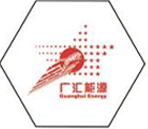
Oct . 15, 2024 01:42
Back to list
Understanding the Functionality and Importance of Pressure Reducing Regulators in Systems
Understanding Pressure Reducing Regulators Essential Components for Fluid Control
Pressure reducing regulators (PRRs) are vital devices used in various industrial applications to maintain and regulate the pressure of gases and liquids. These devices function by automatically lowering the incoming pressure of a fluid to a desired output level, ensuring safe and consistent operation within systems. Whether used in gas distribution networks, hydraulic systems, or any application requiring precise fluid control, understanding the functionality and importance of pressure reducing regulators is essential.
The Principle of Operation
At the core of a pressure reducing regulator is a simple yet effective principle it balances the force of the pressure from the inlet side against a setpoint determined by a spring or other mechanical means. When fluid enters the regulator, it passes through an inlet valve where high pressure is present. The internal mechanism senses the downstream pressure, and if it exceeds the predetermined threshold, the regulator adjusts the inlet valve to restrict the flow. Conversely, if the downstream pressure falls below the set point, the regulator opens the valve to allow more fluid to pass through.
This automatic adjustment helps maintain a constant downstream pressure, which is critical in applications where fluctuations can lead to inefficiencies, safety hazards, or equipment damage. Depending on the design, PRRs may also incorporate features such as pressure relief valves, venting systems, and gauges to monitor performance.
Applications of Pressure Reducing Regulators
PRRs are widely utilized across various sectors, including
1. Healthcare In medical gas systems, pressure reducing regulators help deliver gases such as oxygen at safe pressures, ensuring patient safety and comfort.
2. Natural Gas Distribution In natural gas pipelines, PRRs control the pressure delivered to homes and businesses, maintaining a consistent and safe supply.
3. Hydraulic Systems In hydraulic machinery, these regulators protect sensitive components from excessive pressure, enhancing system longevity and performance.
4. Water Supply Systems In municipal and industrial water systems, pressure reducing regulators ensure stable water pressure, preventing pipe bursts and optimizing water distribution.
5. Industrial Manufacturing Many manufacturing processes require consistent pressure for air, steam, and other gases. PRRs play a crucial role in maintaining operational efficiency.
pressure reducing regulators

Benefits of Using Pressure Reducing Regulators
Using pressure reducing regulators provides several advantages. First and foremost, they enhance safety by preventing overpressure situations that could lead to catastrophic failures. Additionally, they optimize system efficiency, as a properly regulated pressure reduces energy consumption and prolongs the life of equipment.
Moreover, PRRs help ensure uniformity in processes, as consistent pressure levels can lead to better quality control in the production of goods. This consistency can also reduce maintenance costs, as the wear and tear on machines is minimized when pressure levels remain within safe limits.
Choosing the Right Pressure Reducing Regulator
Selecting the appropriate pressure reducing regulator is crucial for optimal performance. Factors to consider include
- Media Type The type of fluid (gas, liquid) being regulated will influence the choice of materials and design.
- Pressure Range The inlet and outlet pressure specifications must align with the requirements of the application.
- Flow Capacity The regulator should be capable of handling the expected flow rates without causing significant pressure drops.
- Temperature Conditions The operating temperatures can impact the material selection, particularly in extreme conditions.
- Installation Space Physical dimensions and mounting requirements should be taken into account to ensure compatibility with existing systems.
Conclusion
Pressure reducing regulators are indispensable components in numerous applications, providing safety, efficiency, and operational stability. By understanding their principles, benefits, and selection criteria, industries can better manage their fluid systems, ensuring that processes run smoothly and effectively. As technology advances, the design and functionality of PRRs will continue to evolve, driving improvements that contribute to safer and more efficient operations across various sectors. Whether in healthcare, energy, manufacturing, or municipal services, these regulators represent a crucial element in modern fluid control systems.
Next:
Latest news
-
Safety Valve Spring-Loaded Design Overpressure ProtectionNewsJul.25,2025
-
Precision Voltage Regulator AC5 Accuracy Grade PerformanceNewsJul.25,2025
-
Natural Gas Pressure Regulating Skid Industrial Pipeline ApplicationsNewsJul.25,2025
-
Natural Gas Filter Stainless Steel Mesh Element DesignNewsJul.25,2025
-
Gas Pressure Regulator Valve Direct-Acting Spring-Loaded DesignNewsJul.25,2025
-
Decompression Equipment Multi-Stage Heat Exchange System DesignNewsJul.25,2025

